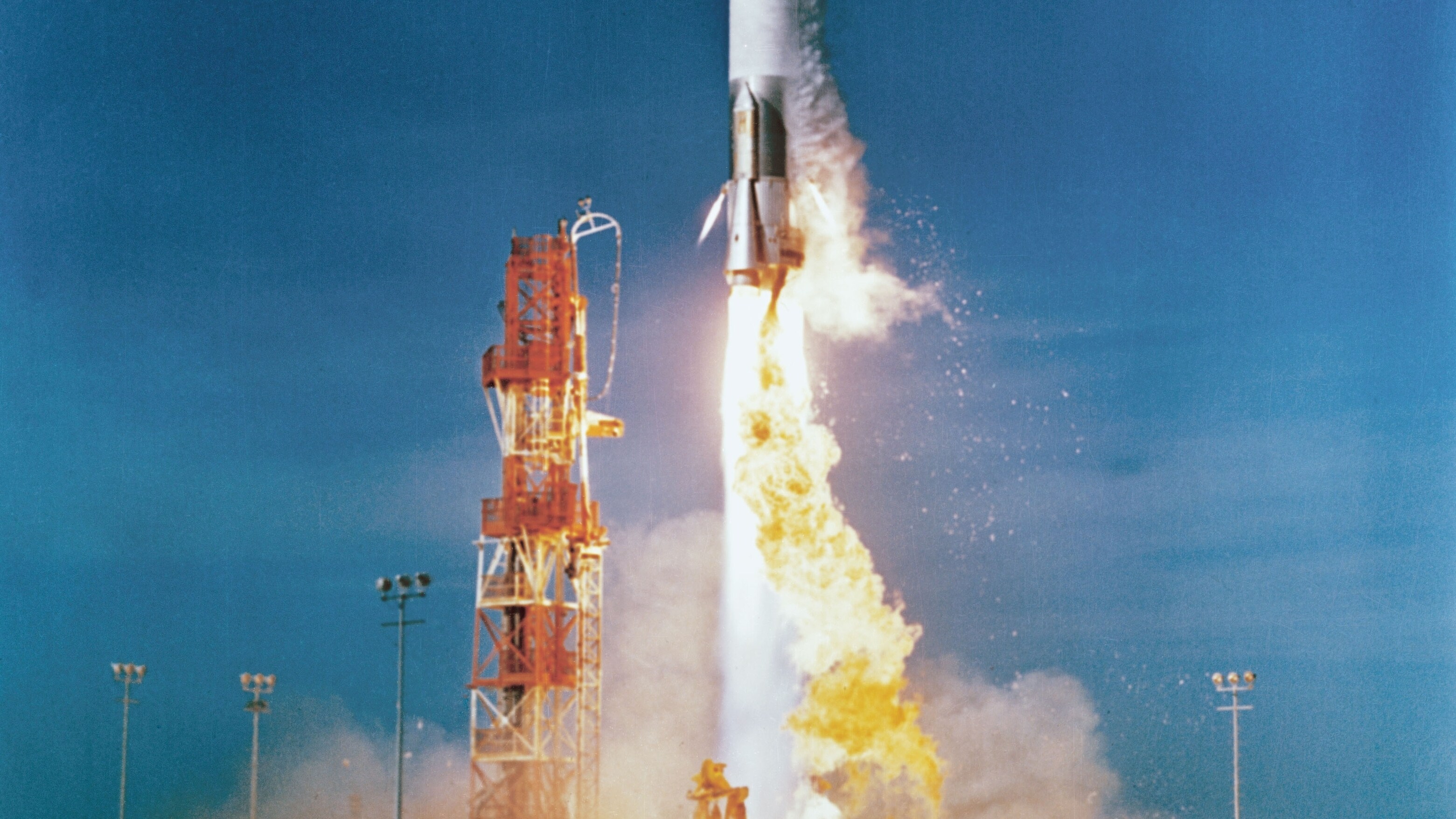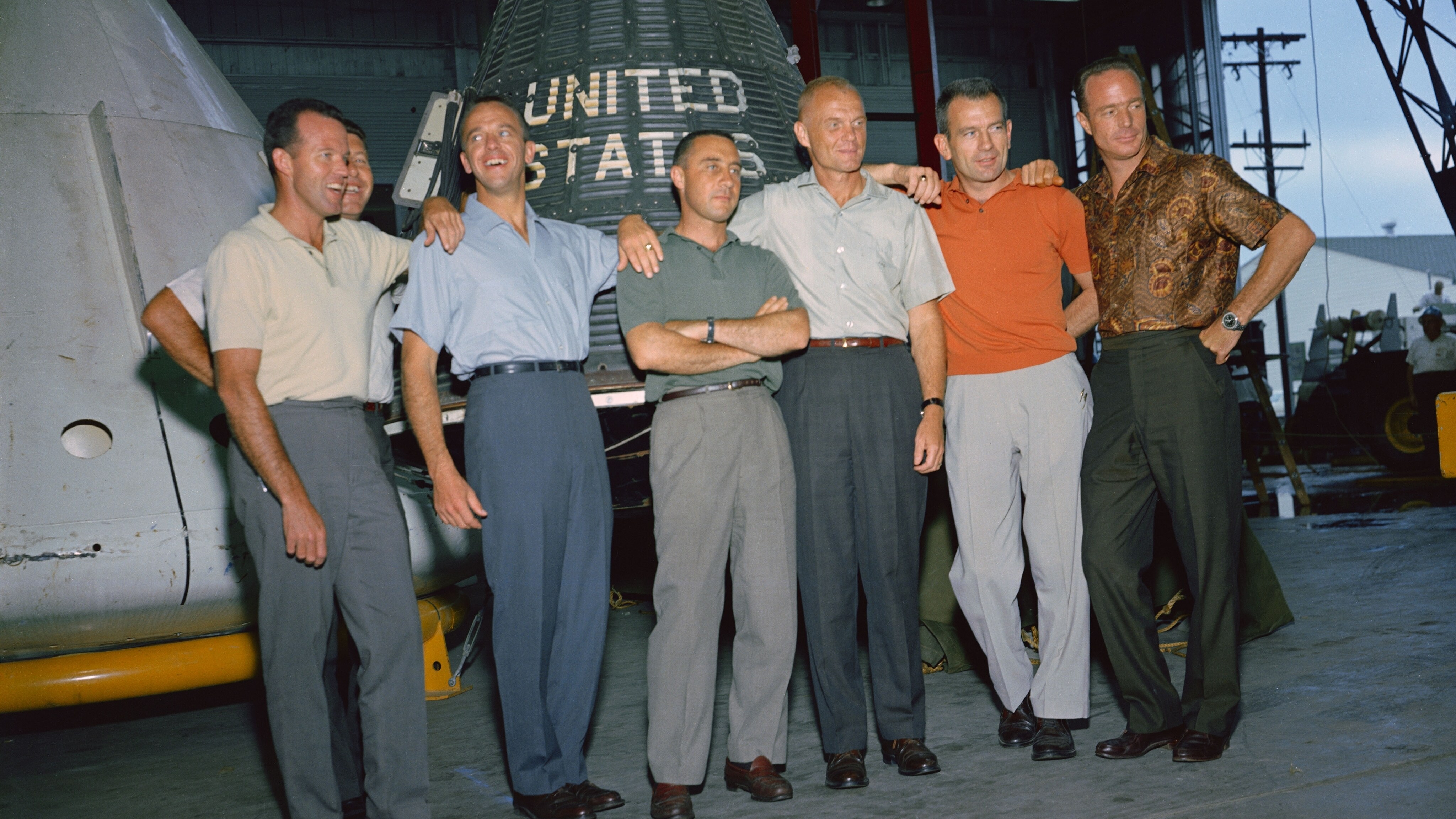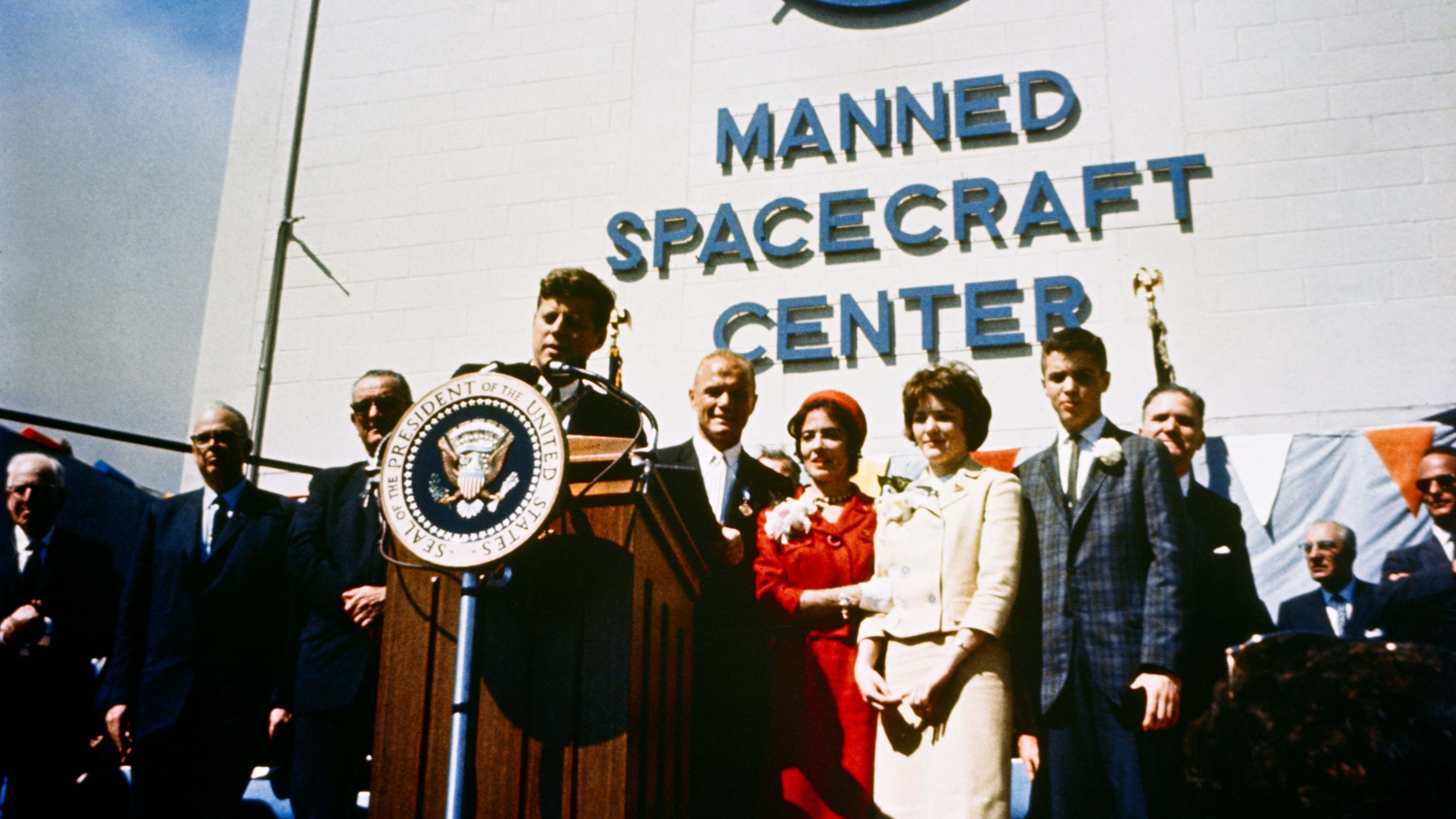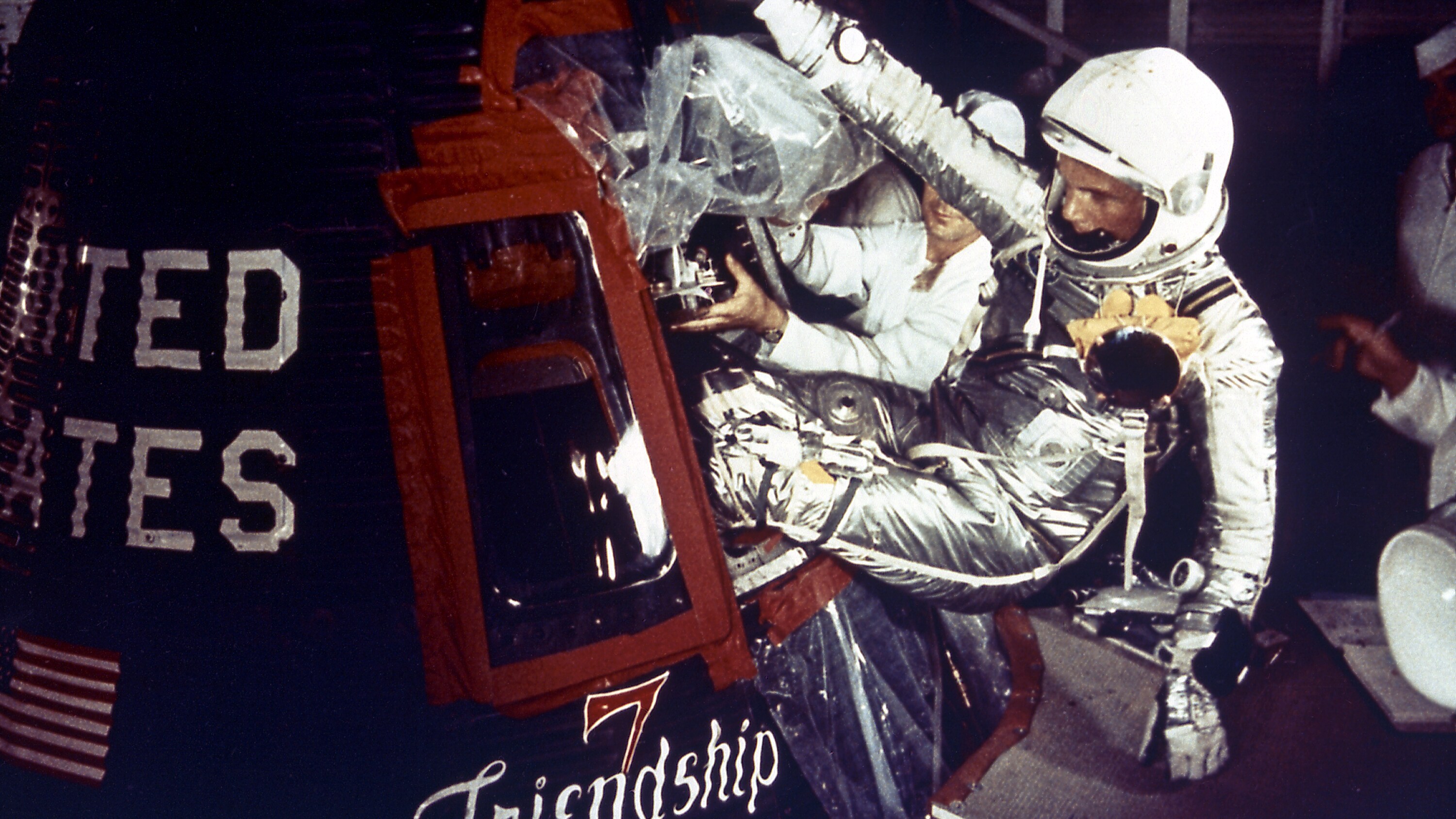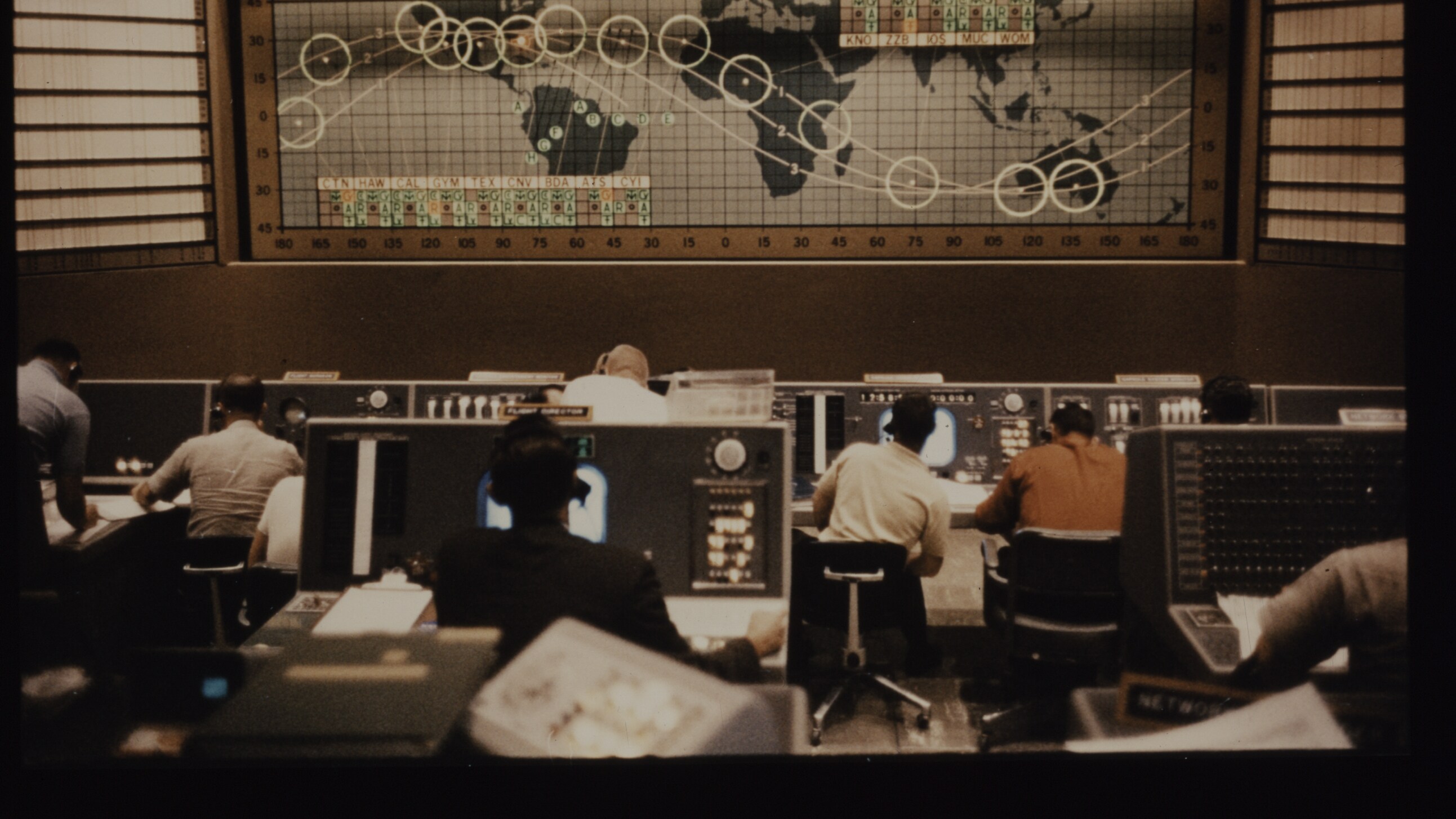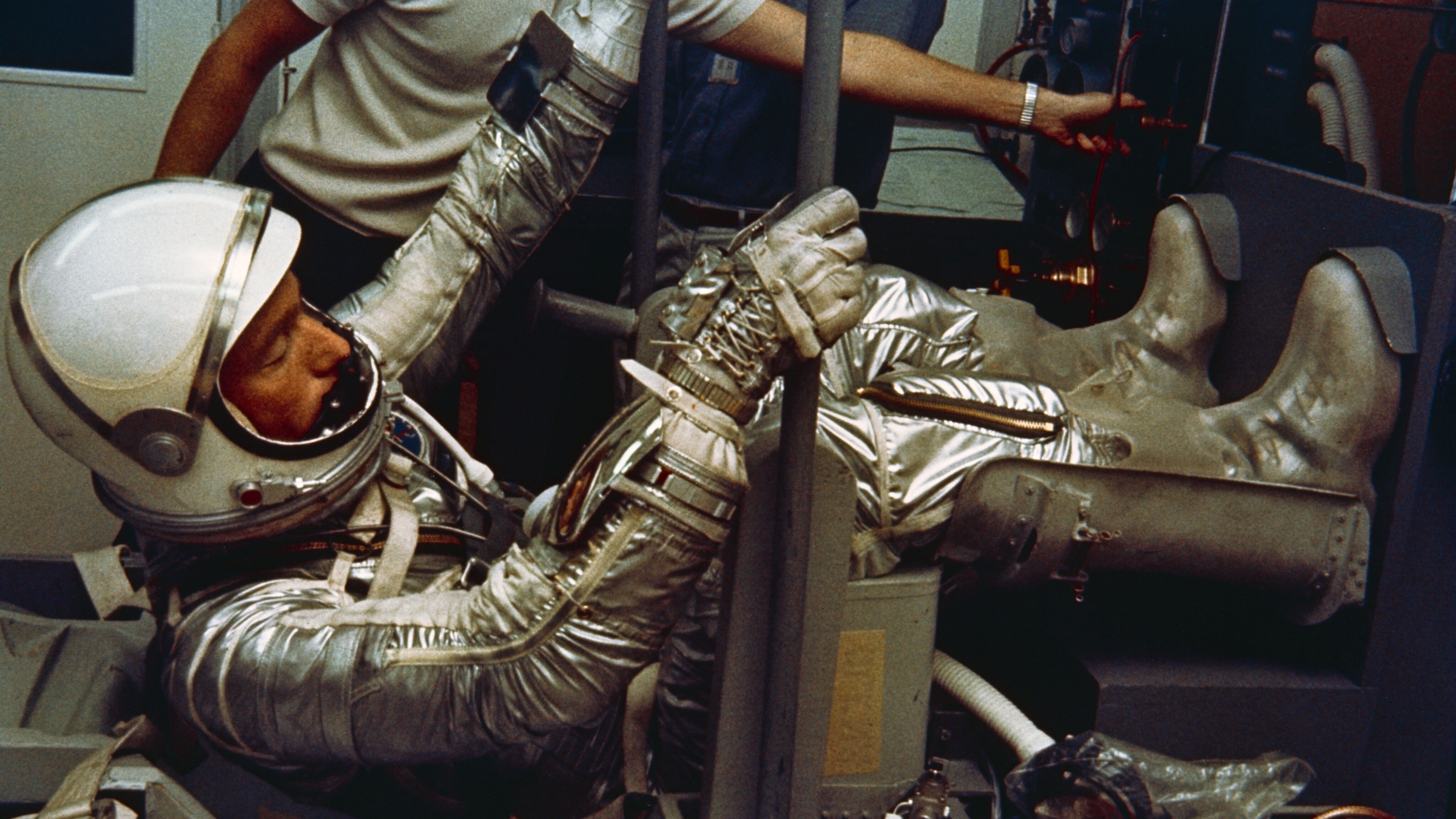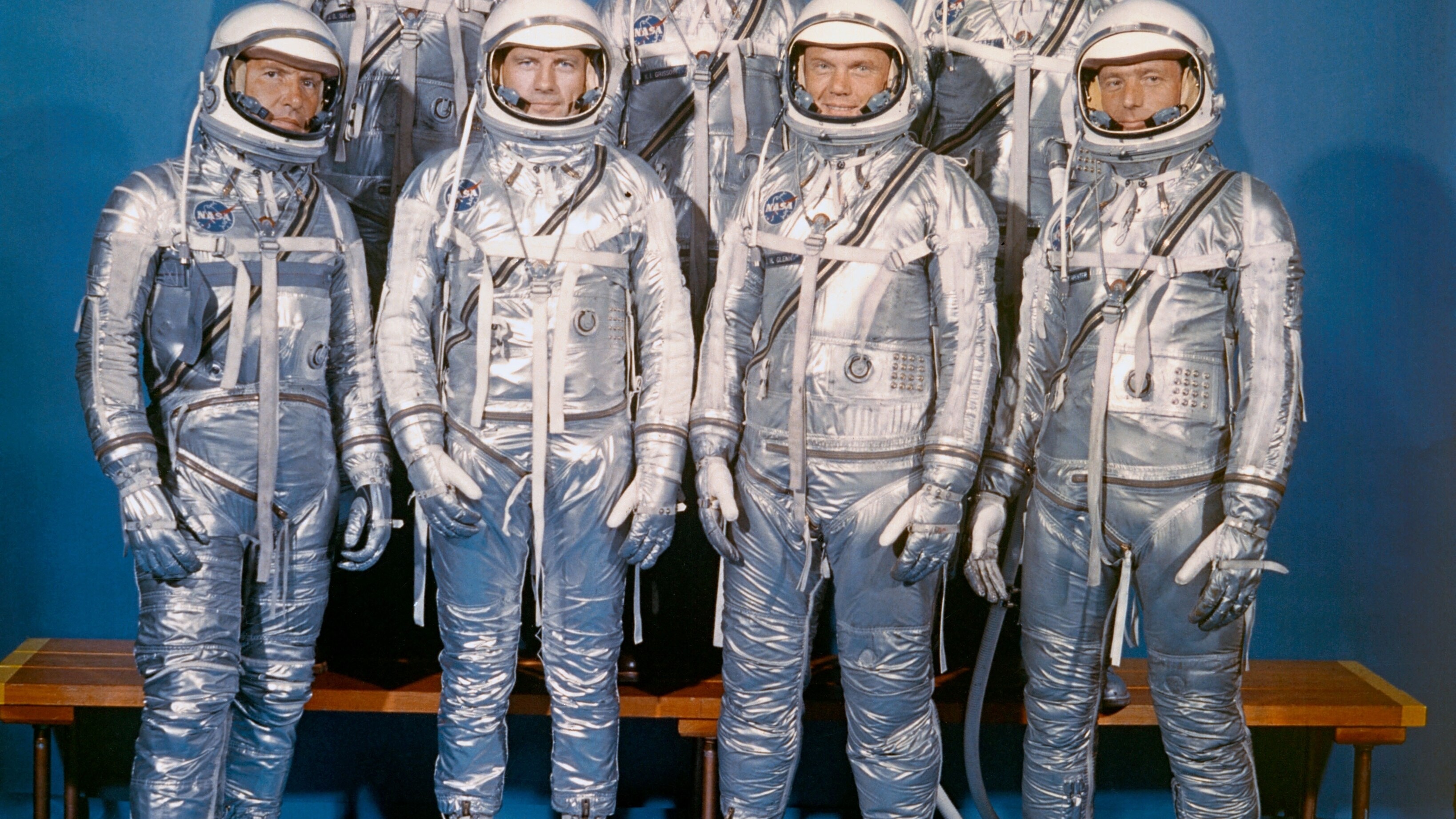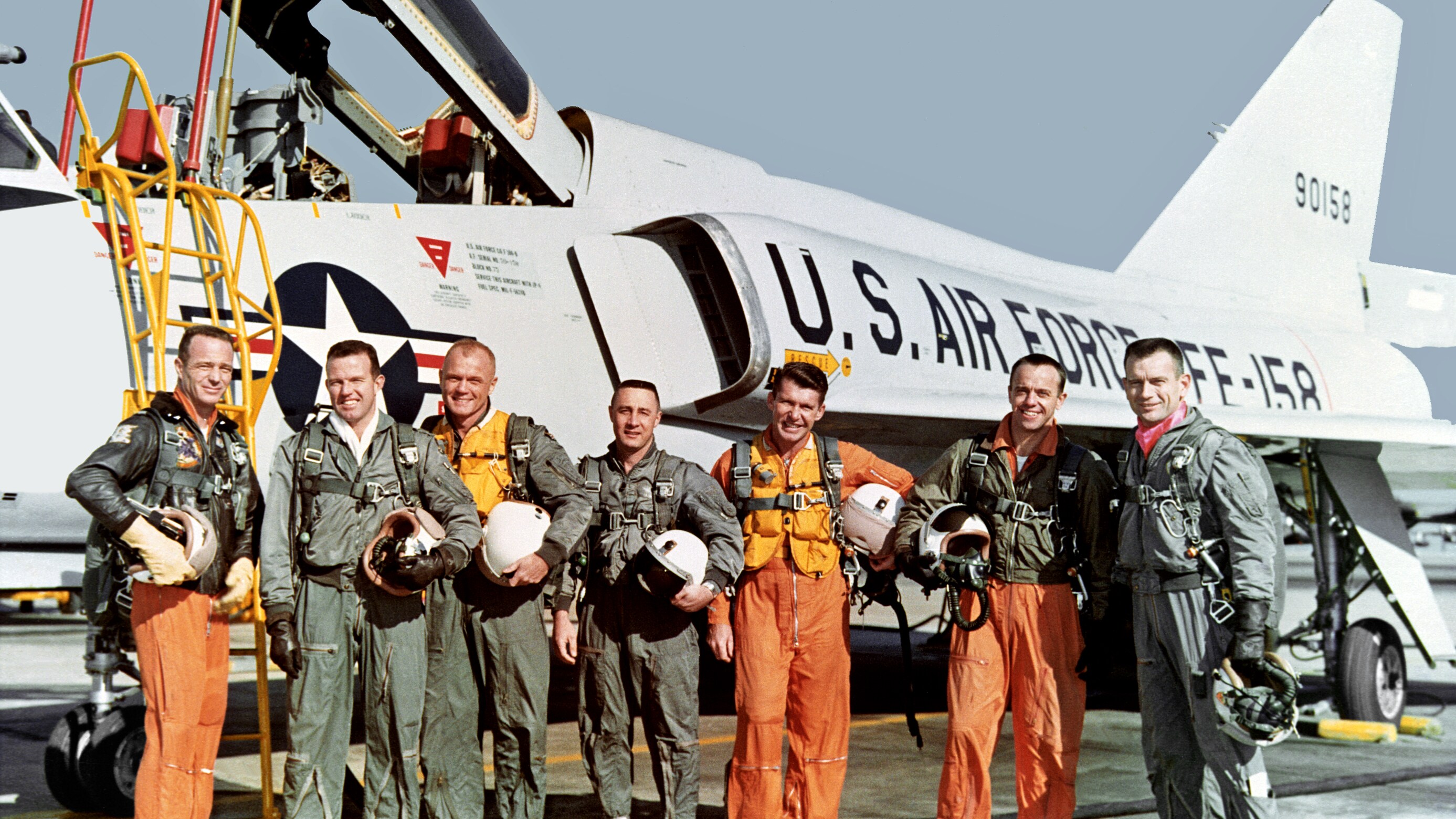The Real Right Stuff Photos
“The Real Right Stuff” tells the remarkable true story of the nation’s first astronauts, the original Mercury 7, and pulls from hundreds of hours of archival film and radio broadcasts, interviews, home movies and other rare and never-before-seen material to catapult viewers back to the late 1950s. The two-hour documentary, from National Geographic, complements the Disney+ original scripted series “The Right Stuff” which will premiere its season finale on the same day.
8 Images |
To download high-res images, click on the image and then use the Download button in the overlay that appears.
Launch of the unmanned Mercury-Atlas 2 (MA-2) vehicle for a suborbital test flight of the Mercury capsule. The upper part of Atlas is strengthened by an eight-inch wide stainless steel band. The capsule was recovered less than one hour after launch. The altitude was 108 miles. Speed was 13,000 mph. Recovered 1,425 miles downrange. (Public Domain/NASA)
ofLaunch of the unmanned Mercury-Atlas 2 (MA-2) vehicle for a suborbital test flight of the Mercury capsule. The upper part of Atlas is strengthened by an eight-inch wide stainless steel band. The capsule was recovered less than one hour after launch. The altitude was 108 miles. Speed was 13,000 mph. Recovered 1,425 miles downrange. (Public Domain/NASA)
ofThis group photo of the original Mercury astronauts was taken in June 1963 at the Manned Spacecraft Center (MSC), now Johnson Space Center, in Houston, Texas. The astronauts are, left-to-right: Cooper, Schirra, Shepard, Grissom, Glenn, Slayton and Carpenter. (Public Domain/NASA)
ofThis group photo of the original Mercury astronauts was taken in June 1963 at the Manned Spacecraft Center (MSC), now Johnson Space Center, in Houston, Texas. The astronauts are, left-to-right: Cooper, Schirra, Shepard, Grissom, Glenn, Slayton and Carpenter. (Public Domain/NASA)
ofAstronaut John Glenn, Jr. is honored by President John F. Kennedy after his historical first manned orbital flight, Mercury-Atlas 6. The ceremony was held at the NASA facility in Florida. (23 Feb. 1962) (Public Domain/NASA)
ofAstronaut John Glenn, Jr. is honored by President John F. Kennedy after his historical first manned orbital flight, Mercury-Atlas 6. The ceremony was held at the NASA facility in Florida. (23 Feb. 1962) (Public Domain/NASA)
ofAstronaut John Glenn enters the Mercury spacecraft, Friendship 7, prior to the launch of MA-6 on February 20, 1961 and became the first American who orbited the Earth. The MA-6 mission was the first manned orbital flight boosted by the Mercury-Atlas vehicle, a modified Atlas ICBM (Intercontinental Ballistic Missile), lasted for five hours, and orbited the Earth three times. (Public Domain/NASA)
ofAstronaut John Glenn enters the Mercury spacecraft, Friendship 7, prior to the launch of MA-6 on February 20, 1961 and became the first American who orbited the Earth. The MA-6 mission was the first manned orbital flight boosted by the Mercury-Atlas vehicle, a modified Atlas ICBM (Intercontinental Ballistic Missile), lasted for five hours, and orbited the Earth three times. (Public Domain/NASA)
ofThe Mercury Control Center during the Mercury-Atlas 5 mission. (Public Domain/NASA)
ofThe Mercury Control Center during the Mercury-Atlas 5 mission. (Public Domain/NASA)
ofAstronaut M. Scott Carpenter, prime pilot for the Mercury-Atlas 7 (MA-7) flight, is seen in Hangar S crew quarters during a suiting exercise in May 1962. Carpenter is seated in a mock-up of his pilot's seat while fully suited. (Public Domain/NASA)
ofAstronaut M. Scott Carpenter, prime pilot for the Mercury-Atlas 7 (MA-7) flight, is seen in Hangar S crew quarters during a suiting exercise in May 1962. Carpenter is seated in a mock-up of his pilot's seat while fully suited. (Public Domain/NASA)
ofOn April 9, 1959, NASA introduced its first astronaut class, the Mercury 7. Front row, left to right: Walter M. Schirra, Jr., Donald K. "Deke" Slayton, John H. Glenn, Jr., and M. Scott Carpenter; back row, Alan B. Shepard, Jr., Virgil I. "Gus" Grissom, and L. Gordon Cooper, Jr. (Public Domain/NASA)
ofOn April 9, 1959, NASA introduced its first astronaut class, the Mercury 7. Front row, left to right: Walter M. Schirra, Jr., Donald K. "Deke" Slayton, John H. Glenn, Jr., and M. Scott Carpenter; back row, Alan B. Shepard, Jr., Virgil I. "Gus" Grissom, and L. Gordon Cooper, Jr. (Public Domain/NASA)
ofThe original seven astronauts trained at NASA Langley Research Center. Chosen from among hundreds of applicants, the seven men were all test pilots. Standing in front of the U.S. Air Force Convair F-106B aircraft, the astronauts are, from left, Lt. M. Scott Carpenter, Capt. Gordon Cooper, Col. John H. Glenn Jr., Capt. Virgil "Gus" Grissom, Lt. Comdr. Walter Schirra, Lt. Comdr. Alan B. Shepard Jr. and Capt. Donald K. "Deke" Slayton. (Public Domain/NASA)
ofThe original seven astronauts trained at NASA Langley Research Center. Chosen from among hundreds of applicants, the seven men were all test pilots. Standing in front of the U.S. Air Force Convair F-106B aircraft, the astronauts are, from left, Lt. M. Scott Carpenter, Capt. Gordon Cooper, Col. John H. Glenn Jr., Capt. Virgil "Gus" Grissom, Lt. Comdr. Walter Schirra, Lt. Comdr. Alan B. Shepard Jr. and Capt. Donald K. "Deke" Slayton. (Public Domain/NASA)
of